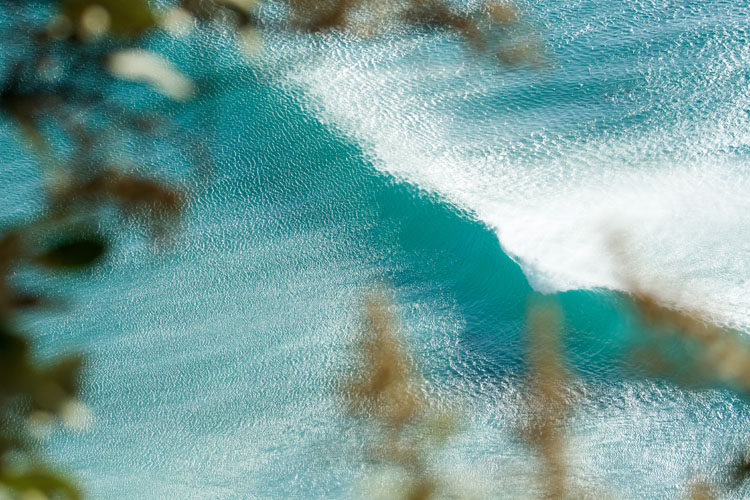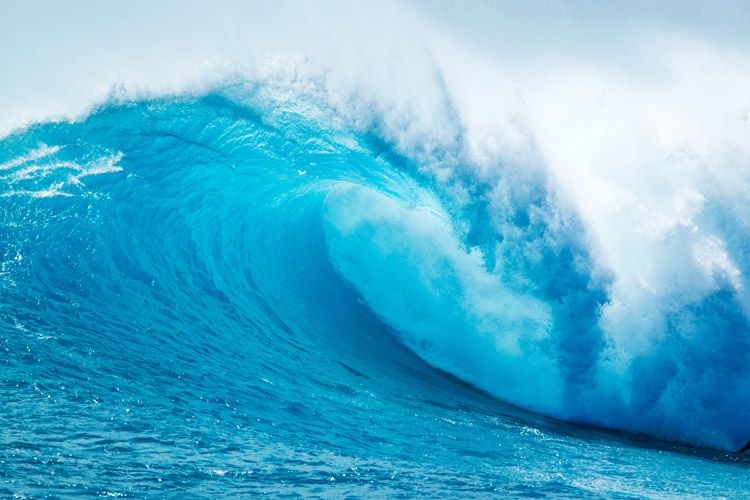The breaking of waves is studied by fluid dynamics, a sub-discipline of physics that studies the science behind liquids and gases.
Scientists have concluded that waves break when their amplitude reaches a critical level that causes large amounts of wave energy to be transformed into turbulent kinetic energy, like a ball rolling down the hill.
In other words, when waves reach shallow waters - usually near coastlines - they increase in height, and their crests meet the Law of Gravitation.
The waves break. That is what wave shoaling tells us.
Wave steepness, a variable of wave physics, controls the effect of shoaling based on the wavelength of the incoming waves.
Wavelength is the distance between two crests or troughs.
Waves begin to break when the ratio of wave height/wavelength exceeds 1/7.
For example, when a 14-foot wavelength reaches a height of two feet, the wave breaks.
Visually, it means that the overall profile of the wave becomes too "thin" before breaking in our line-ups.
Offshore winds tend to hold the wave up and slow it down as it builds and travels toward the beach.
Onshore winds do the opposite. They accelerate the breaking process.

When the Energy Meets the Ocean Floor
Nevertheless, ocean floor topography will critically decide how wave energy will transform into whitewater.
As waves reach the shore, the energy in front of the wave slows down due to friction with the shallow bottom.
Meanwhile, the energy behind the wave moves at full speed and is channeled upwards, climbing the back of the bulging wave.
The wave breaks, and it usually does so at a water depth 1.3 times the wave height.
There are four basic types of breaking waves: spilling, plunging, collapsing, and surging.
Spilling waves are gentle waves with crests that break softly toward the shore. These waves break when the ocean floor has a gradual slope.
Plunging waves break when the ocean floor is steep or has sudden depth changes.
They can be powerful barrels or enormous close-outs. A collapsing wave is a mix of spilling and plunging waves.
Surging waves are the result of long-period swells.
As a result, the wave is slow, the faces are smooth and oblique, and the crest barely exists. These waves may not break at all.
Breaking waves have a deep trough; surging waves do not.
Do you know how a wave is formed?
Take a look at the importance of the swell period in surfing, the effects of shoaling and refraction in wave height, and the difference between groundswells and wind swells.
